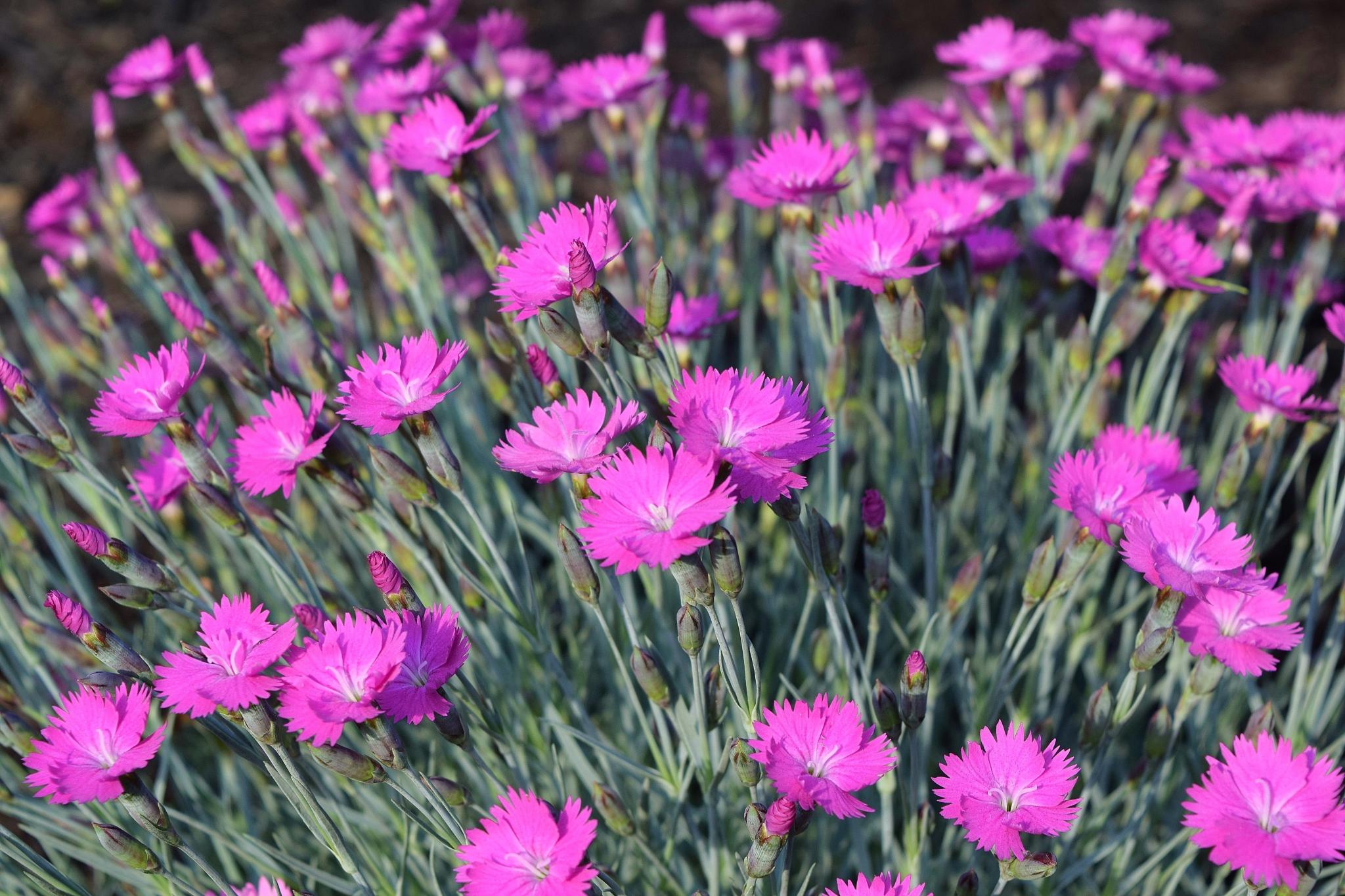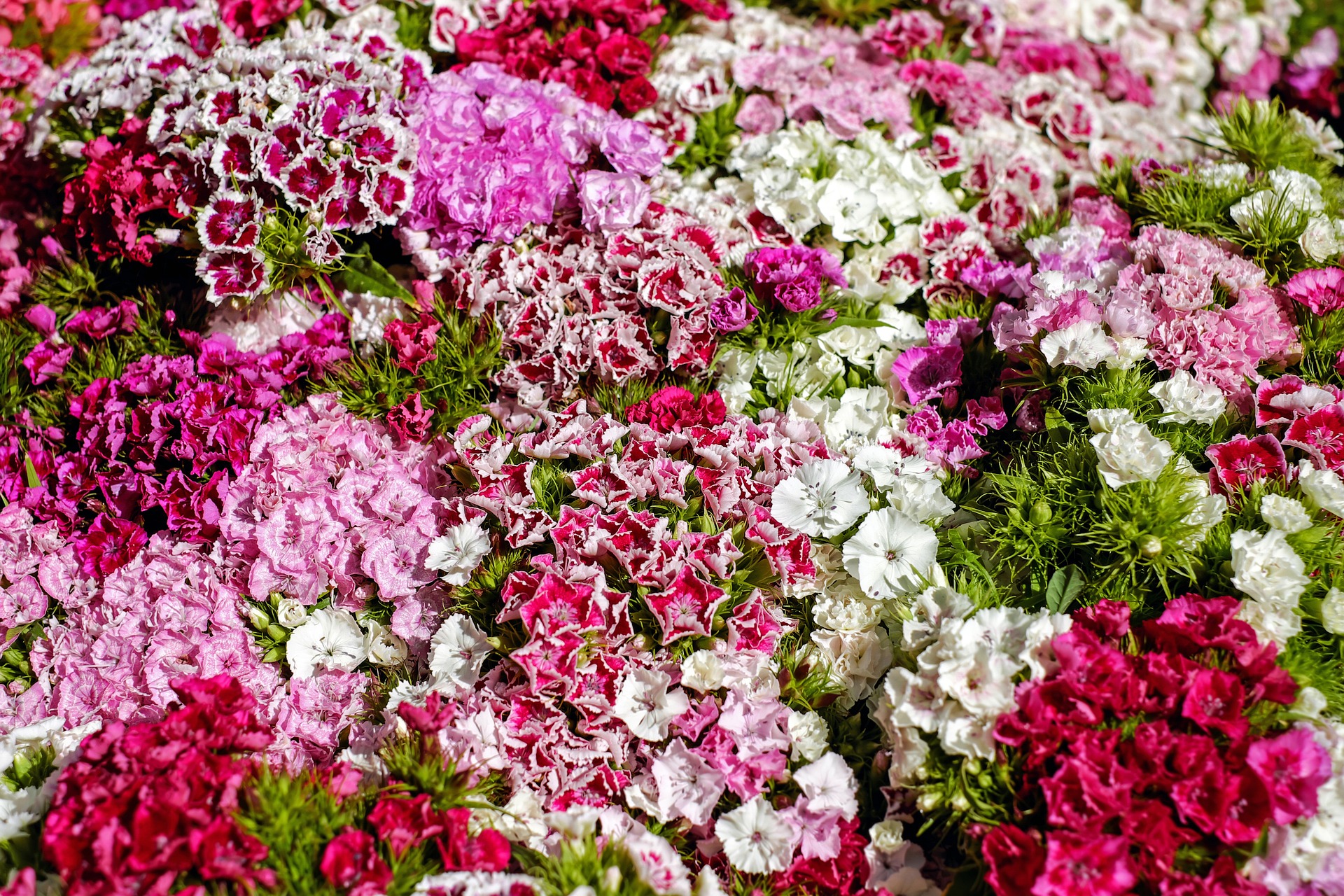Darling dianthus flowers bring beguiling fragrance and cheerful color to sunny borders or containers. Also known as “pinks,” this hardy, adaptable plant ranges from low-growing annuals to taller perennials (such as carnations). If you deadhead, dianthus will keep reblooming from spring sometimes until fall frost! Learn more about how to plant dianthuses.
About Dianthus Flowers
Ancient Greek botanist Theophrastus (c.371–c.287 B.C.) gave the Dianthus genus its name: “divine flower” (dios + anthos). Ever since, gardeners have been smitten with these plants’ charms: a sweet and spicy fragrance and lovely fringed blossoms in many colors (intense pink, white, lavender, yellow, red, bicolor).
Dianthus plants have been cultivated for thousands of years. They were popular in ancient Greece, where they were considered a divine flower and dedicated to Zeus. The name dianthus comes from the Greek word dios for “god” and anthos for “flower.” They were very popular in Tudor and Edwardian times when they were called by picturesque names like gillyflower, pheasant’s ear, and sops-in-wine. Some antique varieties, like ‘Fenbow’s Clove Pink’ can be traced back to the 14th century. Colonists brought their favorite dianthuses with them to the New World along with their other cherished possessions and mention of gillyflowers is noted in America as early as 1676.
Dianthus are popular for many reasons. Besides being hardy and adaptable, they are also long-blooming and will flower prolifically through the summer season if you deadhead the faded flowers. And their fragrance is lovely—similar to cloves. The flowers also attract butterflies, hummingbirds, and other pollinators to the garden. And, they’re deer-resistant!
The common name “pinks” is not because of their most common color (an intense pink) but for the unique fringed or jagged edges of their 5-petal blooms that look like they’ve been cut with pinking shears.
Even when they are not in bloom, dianthuses are attractive plants. Most form neat mounds and many have fine, blue-green foliage making them perfect front of the border plants.
Is Dianthus a Perennial or Annual?
Dianthuses can be annual, biennial, or perennial. Dianthuses genus covers over 300 species; as a gardeners’ favorite, they have been extensively bred and hybridized. Most varieties are 10 to 20 inches tall, but dianthus varieties range from annual creeping ground covers to 24-inch (or longer) long-stemmed perennials (such as carnations) suitable for cutting. This genus also includes Sweet Williams (D. barbatus), which are biennial or short-lived perennials. Depending on the variety, dianthuses bring cheer to sunny garden borders, rock gardens, or containers; they especially look great as bedding plants when massed together.












